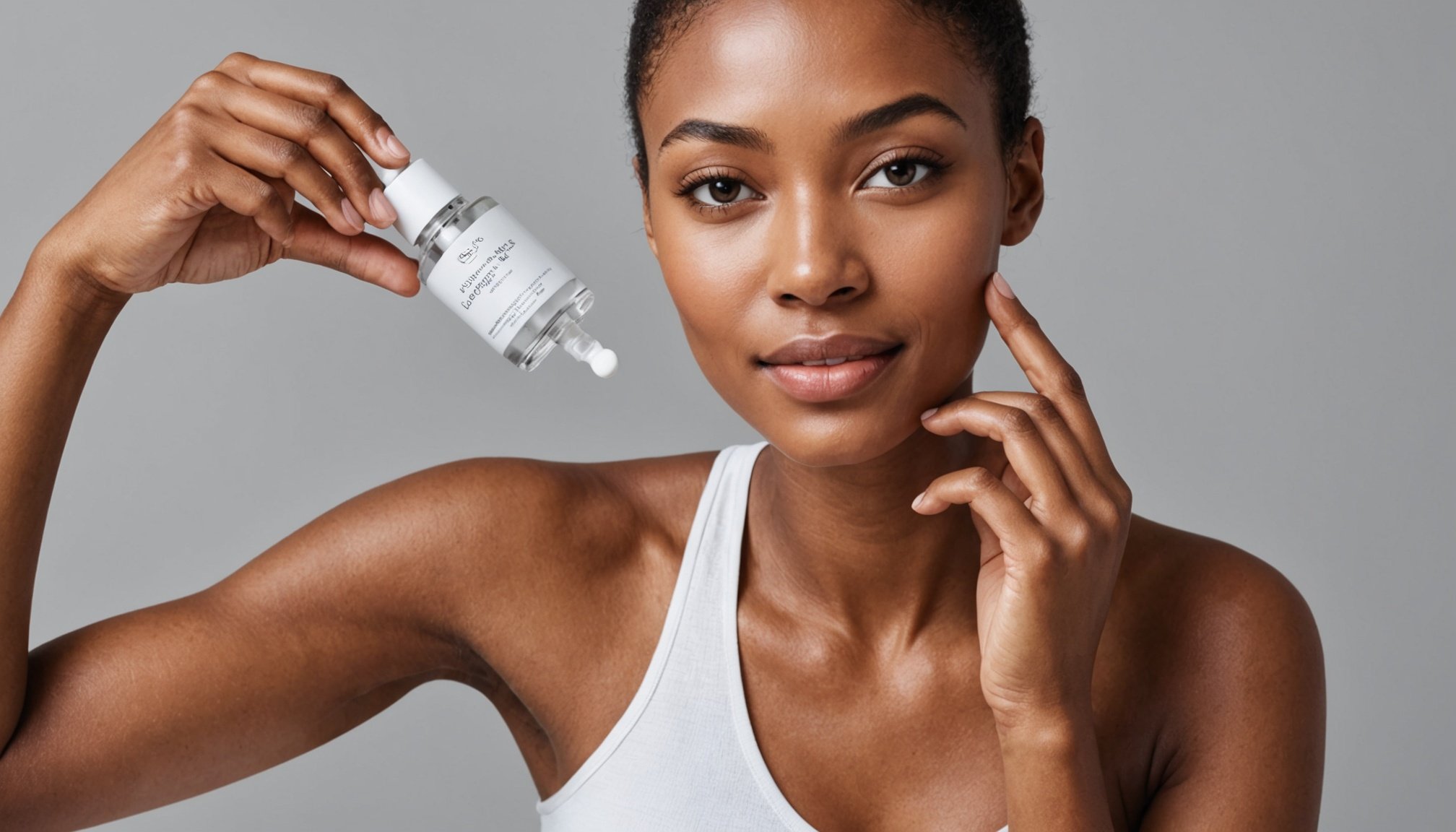Understanding Skincare Product Types
In the realm of skincare products, understanding the wide array of categories can feel overwhelming. Yet, each plays a vital role in achieving and maintaining healthy skin. These include serums, moisturizers, and masks, among others. Moisturizers are primarily aimed at maintaining skin hydration and typically form the final step in a skincare routine to lock in all benefits. Their effectiveness often depends on ingredient compatibility with other products used, underscoring the importance of compatibility in your skincare regimen.
The Importance of Ingredient Compatibility
Ingredient compatibility becomes crucial when layering different skincare products. For instance, while combining serums with moisturizers, one should ensure complementary ingredients to enhance their collective performance. This ensures not only that products do not counteract each other but that they provide the comprehensive skincare benefits desired.
Also read : Elevate your daytime style: inspiring silk kimono outfits for trendy london adventures
Hydration’s Role Across Product Types
An often-highlighted feature across many skincare products is their ability to enhance hydration. For instance, serums generally contain active ingredients aimed at deep penetration, often focusing on moisture retention. Masks, meanwhile, offer intensive hydration, targeting specific issues in shorter durations. Understanding these product types and their intended effects can guide choices that suit individual skincare needs, ensuring hydrated, healthy, and vibrant skin.
The Science of Hydration
Skin hydration plays a crucial role in maintaining healthy and glowing skin. At its core, the ability of the skin to retain moisture is dependent on its water content, which directly affects its elasticity, texture, and overall appearance. The skin’s natural barrier, known as the stratum corneum, works diligently to retain moisture levels while guarding against environmental stressors.
Additional reading : Selecting Stylish Fabrics for DIY Face Masks: Elevate Your Outfits with the Perfect Match!
The effectiveness of hydration is greatly influenced by the surrounding humidity and environment. In lower humidity conditions, the skin is more prone to losing moisture, leading to dryness and flakiness. Conversely, higher humidity levels can improve moisture retention by preventing excessive evaporation of water from the skin’s surface.
Scientific advancements have introduced key ingredients that bolster moisture retention, transforming how we approach skin care. Humectants, such as glycerin and hyaluronic acid, draw water from the environment into the skin, enhancing its hydration. Occlusives, like shea butter, create a protective barrier to prevent moisture loss. Understanding these elements is essential as they work synergistically to maintain optimal skin hydration and health.
Thus, by focusing on crucial components and environmental factors, individuals can actively improve their skin’s moisture retention, resulting in a radiant and resilient complexion.
Mastering the Art of Product Layering
Mastering skincare layering techniques involves understanding the right application methods and the importance of a well-structured routine. To achieve the best results, it’s crucial to follow a strategic approach.
Step-by-Step Guide to Layering
Begin by cleansing your skin to ensure that it is free of impurities. Follow up with a toner to balance pH levels. This sets the foundation for what is to come.
Order of Application
The order of application plays a crucial role in the effectiveness of your skincare routine. Always start with the thinnest consistency. Serums, being lightweight, should go first as they are formulated for maximum penetration. Follow with slightly thicker creams and complete the process with SPF for daytime wear. This order encourages optimal skin absorption.
Techniques for Optimal Absorption
To enhance absorption, use tapping or pressing motions rather than rubbing. This minimizes friction and maximizes product efficiency. Specific gaps, such as leaving a minute between layers, allow each product to dry and settle into the skin properly, avoiding interaction issues. This methodical approach can significantly improve your routine’s efficacy.
Benefits of Optimal Hydration
Optimal hydration is vital for achieving and maintaining hydrated skin, which directly affects skin texture and appearance. When the skin is well-hydrated, it appears softer, more supple, and can radiate an enviable glow. This is because adequate hydration improves the skin’s elasticity and plumpness, reducing the visibility of fine lines and wrinkles.
A consistent routine focusing on maintaining this optimal hydration level yields long-term benefits. Over time, hydrated skin can serve as a strong foundation for other skincare treatments. It creates a suitable environment for active ingredients to penetrate more effectively, enhancing the efficacy of products like serums and creams.
Moreover, having a well-hydrated skin barrier is crucial for skincare benefits, as it aids in protecting against external aggressors such as pollution and harsh weather conditions. Dehydrated skin, on the other hand, can become more sensitive and prone to irritation. Therefore, ensuring your skin retains adequate moisture is not merely about maintaining its appearance. It’s also about fortifying and preparing it for any additional treatments. By focusing on hydration, you empower your beauty routine, unlocking the full potential of your skincare investments.
Common Pitfalls in Skincare Layering
Skincare mistakes often arise from improper layering of products. Understanding your skin type and the specific needs helps in selecting the right order for your regimen. One prevalent mistake is ignoring potential product reactions. Conflicting active ingredients, like retinol and vitamin C, when combined can lead to irritation, redness, or compromising the skin barrier. Each actives should be introduced slowly, and layering products requires careful selection.
- Importance of understanding your skin type: Choosing the right products is greatly dependent on whether your skin is oily, dry, combination, or sensitive. Misjudging this can lead to the wrong products being layered, resulting in ineffective skincare, or worse, adverse reactions.
Another common issue is overlooking the skin barrier, which is crucial for protecting underlying layers of skin. Overuse of exfoliating products, particularly those with strong acids, can strip this barrier, leaving the skin vulnerable. Always pace application of potent actives to maintain barrier integrity.
Being informed about compatible ingredients and understanding your skin type ensures effective product layering, promoting healthy skin. It prevents common pitfalls and maximizes the benefits of each product.
Recommended Products for Effective Layering
Choosing the right product recommendations can significantly enhance your skincare regimen, particularly when focusing on hydrating products. To build an effective routine, consider mixing products with compatible formulations. Layering should always begin with the lightest products first, allowing them to absorb fully into the skin before moving on to the next.
For skincare staples, look for products with ingredients like hyaluronic acid, glycerin, and aloe vera. These ingredients are key for hydrating products, drawing moisture into the skin and ensuring it stays plump and healthy. When selecting items to complement each other in a routine, aim for serums, moisturizers, and toners from the same brand or formulated to work together, as they often offer synergistic benefits.
When choosing products, consider your skin type and any specific concerns. For instance, oily skin might benefit from lightweight, oil-free products, while dry skin may need richer formulas. Those with sensitive skin should seek out products that are fragrance-free and hypoallergenic. These skincare staples not only target hydration but also address varied skin concerns, offering a comprehensive solution to maintaining a balanced and healthy complexion.
Visual Aids for Skincare Layering
Visual representations play a crucial role in mastering the art of skincare layering. They provide a clear and concise guide, helping enthusiasts navigate the often-complex process of determining the optimal order for applying products. For instance, diagrams effectively illustrate steps such as cleansing, toning, and moisturizing, making it easier to remember and replicate daily routines.
There are various layering visuals available, often showcasing the best sequences tailored for different skin types—whether oily, dry, or combination. Such visuals might include arrows, step numbers, or illustrations that highlight each product’s role in the routine. A well-organized diagram can transform a disordered collection of skincare products into a coherent process, maximizing the effectiveness of each item.
For those who prefer a personalized approach, creating your own skincare product guides can be exceptionally beneficial. Start by listing all products, from serums to sunscreens, and categorize them based on their application sequence. Incorporating these personal insights into a custom diagram not only aids in consistency but also enhances understanding of how each product contributes to your skin’s health. Utilizing a simple tool like a notebook or digital platform can bring your skincare journey into clearer focus.











